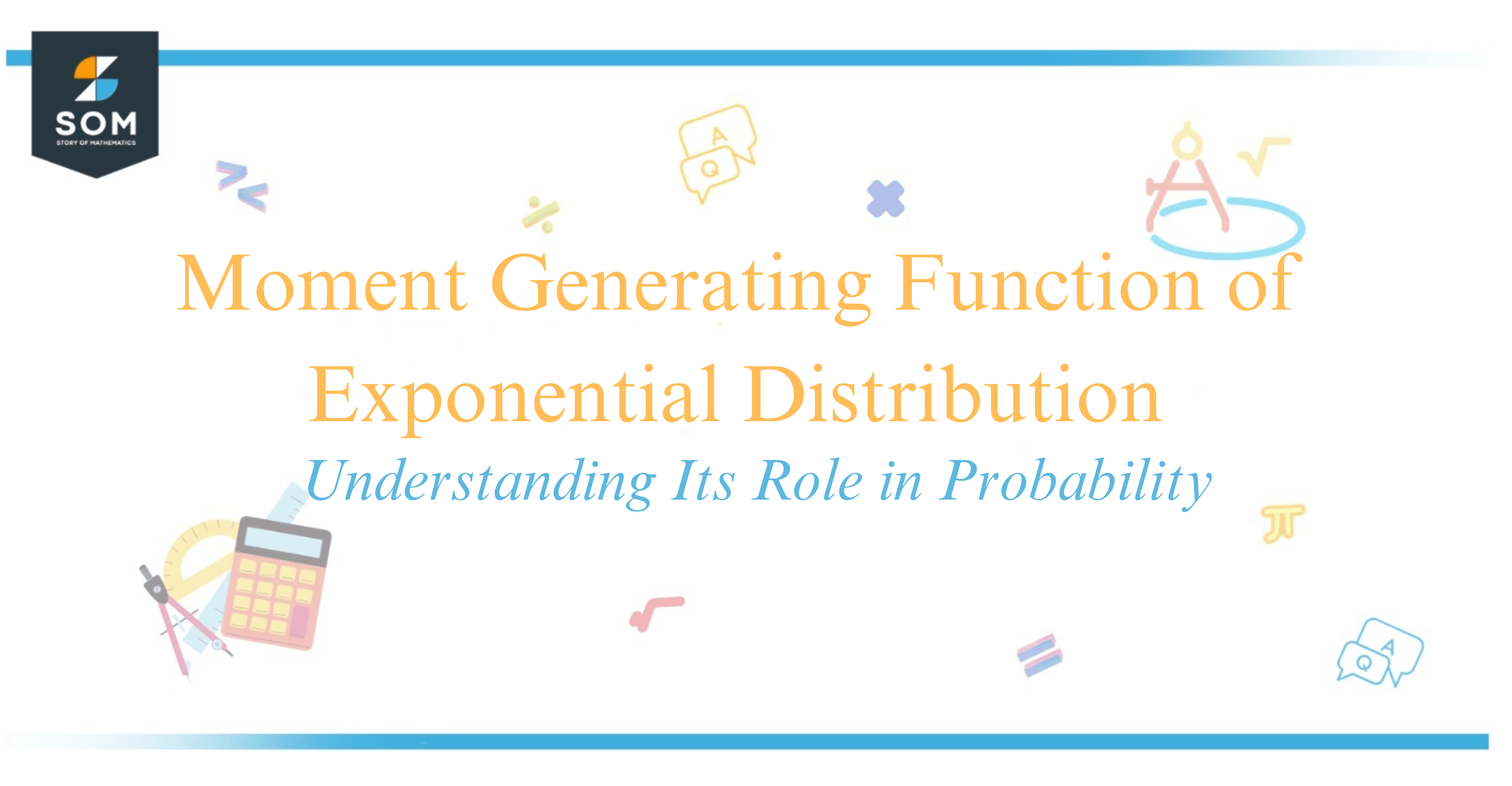
For a random variable $X$ that follows an exponential distribution with rate parameter $\lambda > 0$, the MGF, $M_X(t)$, is defined only for $t < \lambda$. The MGF for the specified domain of $t$, is calculated as: $$M_X(t) = \frac{\lambda}{\lambda – t}$$
The moment generating function (MGF) of an exponential distribution is a powerful tool in probability theory that encapsulates all moments of the distribution in one expression.
This function is particularly useful because it provides a convenient way to calculate the mean, variance, and higher moments of the distribution by taking derivatives of the MGF.
I find that the beauty of the MGF lies in its simplicity and the insight it offers into the exponential distribution’s behavior.
The exponential distribution itself is remarkably straightforward, characterized by its constant hazard rate, which in practical terms relates to memoryless processes—where the probability of an event occurring in the next instant is independent of the time that has already elapsed.
Explore further and you’ll discover how this elegant function not only simplifies computations but also serves as a bridge to understanding more complex stochastic processes.
Moment Generating Function of an Exponential Distribution
In this section, I’ll explain how the moment generating function (MGF) provides a comprehensive way to understand the entire probability structure of an exponential distribution function.

Exploring the MGF allows us to calculate moments, such as mean and variance, that define the characteristics of this probability distribution.
MGF of an Exponential Random Variable
The MGF of a random variable is a function that offers a convenient method for deriving the moments of the distribution. For a continuous random variable ( X ) with an exponential distribution, which has a probability density function (pdf) $ f(x) = \lambda e^{-\lambda x} $, the MGF is defined by $M_X(t) = E[e^{tX}]$.
Given a rate parameter ( \lambda ) that is greater than zero, the MGF for ( X ) is calculated through the following integral:
$$M_X(t) = \int_{0}^{\infty} e^{tx} \lambda e^{-\lambda x} dx $$
The integral converges for ( t < \lambda ), resulting in a simplified expression:
$$M_X(t) = \frac{\lambda}{\lambda – t}, \quad \text{for } t < \lambda $$
From ( M_X(t) ), I can derive the expected value and variance by taking the first and second derivatives respectively, and evaluating them at ( t=0 ). For the mean ( E[X] ), it’s the first derivative:
$$ E[X] = M_X'(0) = \frac{1}{\lambda} $$
For the variance ( \text{Var}(X) ), it’s the second derivative minus the square of the first derivative:
$$\text{Var}(X) = M_X”(0) – [M_X'(0)]^2 = \frac{1}{\lambda^2}$$
This MGF reveals that the moments are tied directly to the rate parameter $\lambda$, showing its impact on the shape of the exponential distribution.
The ability to understand and compute the MGF is valuable in probability theory and statistics, especially when working with more complex scenarios involving convolutions of independent random variables or linear transformations of them.
Conclusion
In this article, I covered the moment-generating function (MGF) for the exponential distribution. I explained that for a random variable ( X ) with an exponential distribution and rate parameter $\beta$, the MGF, denoted as $M_X(t)$, is given by:
$$ M_X(t) = \frac{1}{1 – \beta t} \quad \text{for} \quad t < \frac{1}{\beta}$$
and undefined for $ t \geq \frac{1}{\beta} $. The usefulness of the MGF is evident as it provides a mechanism to derive the expected values of functions of ( X )—including the mean and variance—simply by taking derivatives of ( M_X(t) ) with respect to ( t ).
In summary, I’ve unpacked how MGFs serve as a powerful tool in the realm of probability and statistics, particularly with respect to the exponential distribution. They aid in computations involving expected values and prove essential in the study of statistical properties of distributions.
Understanding MGFs, especially for distributions like the exponential, is fundamental for professionals in fields that involve statistical analysis.
The beauty of MGFs lies in their ability to encapsulate all moments of distribution in one function, streamlining otherwise cumbersome calculations.
I hope this discussion solidifies your comprehension of the moment-generating function for the exponential distribution and its critical role in statistical theory.
